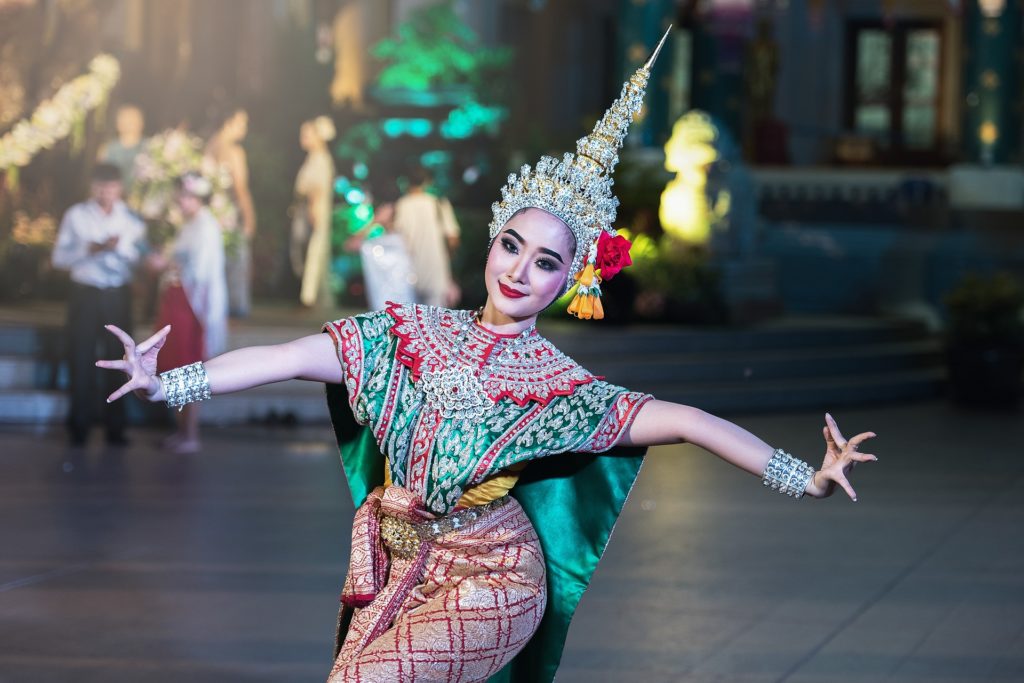
Arts

The innate creative capacity to express our inner speech through all our senses. Typically people think of arts by referring to mastery (artists). For our purposes, it is a spectrum that ranges from being artistic (a child drawing a stick-figure picture) to the master artist or artisan (a painter painting a masterpiece).
Story: The Art Critic Learning
The art critic, John, walked into the cultural exposition and was immediately drawn to a painting that caught his eye. As he approached it, he began analyzing it with a critical eye. Meanwhile, the artist, Maria, watched nervously as John approached her painting.
John: You should add more contrast and maybe use vibrant colors to make your painting stand out.
Maria’s heart sank. She had put so much thought and care into creating the painting, and to her, it represented her people’s traditions and values. She was disheartened to hear someone else critique it so harshly.
Maria: I understand you’re an art critic, but this painting is more than just a piece of art to me. It represents my culture and who we are as a people. It’s our history.
John paused for a moment, realizing he may have been too harsh.
John: I apologize, Maria. I didn’t mean to offend you. I’m just used to critiquing art from a purely artistic perspective. I can see now that your painting means a lot more to you than just an art piece.
Maria: I appreciate your suggestions. But I think I will keep the painting the way it is. It’s important to me to stay true to my culture and people.
As John walked away, he couldn’t help but feel humbled by the experience. He realized that art is more than just a product to be critiqued – it represents culture, history, and identity.

Why does it matter?
For some, art is entertainment; for others, it’s identity. They don’t just observe it, they become a part of it.
Understanding what the arts mean to people and how they use them is essential. The arts can make the message engaging, memorable and truly their own.
Examples from the Bible
- When the Jews celebrated, they often expressed themselves in songs. They sang the songs generation after generation (Judges 5). Future generations might forget written texts recorded for scholars (Annals of the Kings of Judah) or even the Torah, which eventually was lost.
- Paul instructs the church to teach one another through songs, hymns, and spiritual songs (Colossians 3:16-17).
- God rejected Saul as king over Israel and withdrew His Spirit; Saul received an “evil spirit.” That harmful spirit departed from Saul after David skillfully played his lyre (1 Samuel 16:23).
- Moses led the nation into the wilderness on the other side of the Red Sea. He & Miriam made and sang this song when the Israelites’ salvation was real to them by the parting of the sea. This “compacted” history through song made succeeding generations remember the event (Exodus 15:1-21).
- The Tabernacle materials and items of colored skins, poles, furniture, utensils, incense, food (bread, oil, wine, etc.), sacrifices, priestly garments, and decorations all reflected imagery of dwelling with God in The Garden of Genesis 1-2 and the New Garden of Revelation 22 (Exodus 26).
- Jesus used multiple art forms on his last evening with his disciples. The room was decorated with the table and cushions, the rood: bread, wine, and the lamb with all the prescribed side dishes, and they sang hymns on the way to Gethsemane (John 13).
Real-life examples
- For many years, the Christian message was foreign to the Thai people, even though the Bible and songs had been translated into their language. This changed dramatically when an elderly woman began to dance a traditional local dance while singing the translated songs. Suddenly, the community realized that they could make the message their own.
- The young women of the Manobo tribe wore their traditional attire for the second day of a workshop. One of the young men smiled so widely. He whispered, “I don’t know why, but they look more beautiful, don’t they? They’re just beautiful!”
- The movie “Passion of the Christ” depicts the suffering of Jesus from the cruel flogging with metal-tipped cords that ripped the flesh from his back to the impaling of his hand to the cross with the forceful blow of a soldier’s hammer to his eventual suffocation and death. Viewers left theaters still weeping as they contemplated the cost of their forgiveness through the punishment he took for them. Years later, they still recall the impact of those artistic images.
- Eleven language communities composed worship songs as an output in an Ethnoarts workshop in Kota Kinabalu. Some newbie Bible translators who joined testified that what was burdensome work for them on translating Scriptures suddenly turned into a meaningful and noble task after learning that they could compose and turn Proverbs into a locally translated, contextualized hymn for their villages.
- A translator composed an awareness song about socio-environmental care. She took the piece to a village and sang it in church. Some members got convicted with the message of illegal logging and committed to stopping slash-and-burning, including the pastor – her father.
- Among the Mangyan people from Mindoro, an island in the Philippines, colors have significance. They are subdivided into eight clans of which each has its own color patterns. Using the correct colors is important in their art.
Relevance

The arts go beyond communicating through verbal or textual words and express messages by opening doors to the heart. The arts communicate in ways that engage all our senses emotionally and help people remember.
The arts help define our culture and affect societies as they form their values and norms. We know who we are as a people partly because of our artistic expressions and unique forms of expressing ourselves.
The arts are a holistic way of communication. They can embody a people’s narrative, rituals, and symbols and often tell their history. They usually produce a strong emotional or physical response from people who experience them.
The arts help internalize a truth, message, or inner speech. It brings the written or spoken message closer to home, more directly to the heart, and deeply ingrained in the mind. Arts help order and organize what we value by using space, ideas, sound, sight, taste, smell, touch/texture, materials, or appearances.
Orality preference continuum
The arts are an essential part of any culture. We see a difference between HOR and LOR cultures in the meaning of and identification with the arts.
For HOR cultures, the arts are an important living part of their history and identity. Then performing the arts, people become part of it.
The same components can also be found in LOR cultures. Still, the arts are generally for entertainment, and participation is not automatically identification for them.
The outer ends of the continuum are suitable for demonstrating tendencies. However, most people can be found somewhere in between these poles.
| Very high | High | Low | Very low |
|---|---|---|---|
| The arts connect us to our past and make us part of it. | We commemorate and remember our past through the arts (song, chant, weavings). | Past artistic expressions provide windows into the past for appreciation and enjoyment. | The arts serve each generation and move out of use and popularity with time. |
| Artistic expressions must follow shared expectations of an artistic expression. | Casually follow a certain level of shared expectations. | Structured rules emerge but allow some level of creativity. | Structured rules become the norm and expectations. |
| We learn to play instruments, sing, and make artifacts by imitating and modeling the teacher. | Someone will informally teach us to play instruments. | Notes are the base for learning music, but freestyle is also ok. | Instruments are taught by professionals in institutions/schools using musical notes. |
| Doing art makes us become part of the whole artistic expression. Becoming one with the art (emerging). | Participating in the arts begins to connect us to expression. Transport into the art. | The arts are essential for us to be emotionally touched. Emotional connection with the art. | The arts are simply entertainment. Entertainment by the art (appreciating). |
What has been discovered?
There are multiple ways of categorizing the arts (link to wiki article). Some cultures distinguish between song, music, and dance. In contrast, others only have one word in their language for these art forms because they can’t be separated.
Art takes a person from their current life experience and presents a new reality (through the art form) where the person is changed. They come out on the other side with a fresh perspective. That middle part of the sequence is “liminal space.”1
The arts give us a more concrete means to remember what we receive in communication.2
Arts often are drawn from historical memory and produced for present and future generations.3
The emotional response to appreciating arts may facilitate learning (recall with appreciation).4
Building on the concepts of tradition (Ricoeur), creativity (Csikszentmihalyi), and communication, when an art form is performed or done, it is preserved, innovated, communicated, and transmitted.5
Identification – arts generated and embraced by indigenous people give them a stronger sense of their cultural value in a multi-ethnic world where dominant voices of colonizers (political or religious) mute the colonized. Likewise, you affirm or challenge the entire group if you do something to that art form.
Ownership – does the whole community claim the artistic expression as their own – like a weaving pattern? Is the individual that expressed it lay their personal claim to the work – as in a copyrighted song?
Indigenous art forms are more than “artifacts.” Indigenous peoples say those artifacts remain a real part of their soul or collective identity. If you take or destroy our artifact, you rob or kill part of US.6

Additional resources
- Watch this webinar with Deborah Kim & David Ige about Ethnodoxology and check out the corresponding resource collection.
- Discover more about Arts through our training materials on the I-OS website!
- Brian Schrag tells the story of La Chorale Ayo, how the Mono community in northwest Democratic Republic of Congo are drawing on their indigenous arts to become more like Heaven.
- This article is trying to classify the different art forms.
- Irving, G., Wright, A., & Hibbert, P. (2019). Threshold concept learning: emotions and liminal space transitions. Management Learning, 50(3), 255-273.
Liminality and experience: Structuring transitory situations and transformative events. International Political Anthropology Journal, 2(1), 142-172. ↩︎ - Global Arts and Christian Witness (Mission in Global Community): Exegeting Culture, Translating the Message, and Communicating Christ. Baker Academic, 2019, Chapter 2 (p. 45-61). ↩︎
- Kuchler, Susanne, “Malangan: art and memory in a Melanesian society.” Man (1987): 238-255. ↩︎
- Muriel I. Elmer and Duane H. Elmer. The Learning Cycle: Insights for Faithful Teaching from Neuroscience and the Social Sciences. ↩︎
- Schrag, Brian. How Artists Create Enduring Traditions. ↩︎
- Cruz, Christopher E. Intellectual Property of Indigenous Peoples (IP of IPs): Challenges in Protecting Traditional Knowledge in the Philippines.
We Are The Land: The Struggle Between Renewable Energy and Indigenous Values Trailer. ↩︎
